Removal Procedure
Notice: If the engine is damaged internally and a new engine assembly is installed
in the vehicle, ensure that all foreign material is flushed out of the cooling
system. You must also flush out the oil cooler system. Failure to rid the
oil cooler system of debris can result in engine damage.
Notice: On some vehicles it may be necessary to support the transmission as
the engine is removed to prevent the transmission from falling, causing damage
to the unit.
The procedure required to replace an engine varies according to the optional equipment and available shop facilities. The following procedure is intended only as a guide for performing the work. The technician must determine what additional work is needed.
- Block the wheels.
- Remove the engine cover. Refer to
Engine Cover Replacement.
Caution: Refer to Battery Disconnect Caution in the Preface section.
- Disconnect the battery negative cable from the battery. Refer to
Battery Negative Cable Replacement.
- Drain the reservoir for the air brakes. Refer to
Air Brake Reservoir Draining.
- Place the transmission in Neutral.
- Remove the air cleaner. Refer to
Air Cleaner Replacement.
- Remove the cooling layer. Refer to
Cooling Layer Removal.
- If equipped, remove the front modulator valve bracket from the front crossmember. Refer to
Front Brake Pressure Modulator Valve Replacement.
- Remove the front radiator crossmember. Refer to
Radiator Crossmember Replacement.
- Remove the engine front crossmember. Refer to
Engine Front Crossmember Replacement.
Important: Cover the turbocharger openings with duct tape or with any suitable cover in order to prevent any foreign objects from falling into the turbocharger. This will prevent any damage from occurring to the turbocharger.
- Remove the charge air cooler pipes. Refer to
Charge Air Cooler Inlet Pipe and Outlet Pipe Replacement.
- Remove the power steering pump. Refer to
Power Steering Pump Replacement.

- Remove the electrical connectors from the following
components:
| • | The engine wiring harness |
| • | The engine control unit (ECU) |
| • | The oil pressure sensor |
| • | The engine coolant temperature switch |
| • | The fuel/water separator |
- Remove the engine wiring harness from the retainers.

- Remove electrical connector from the generator.
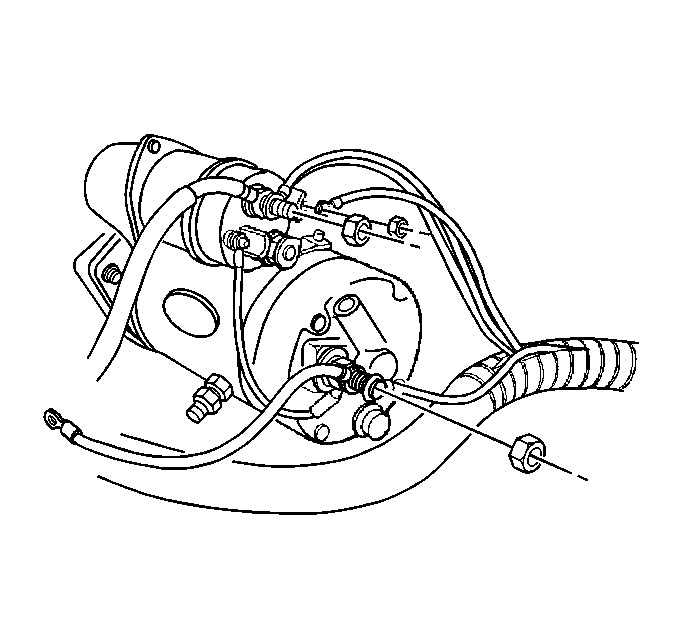
- Remove the electrical wiring harness from the starter.
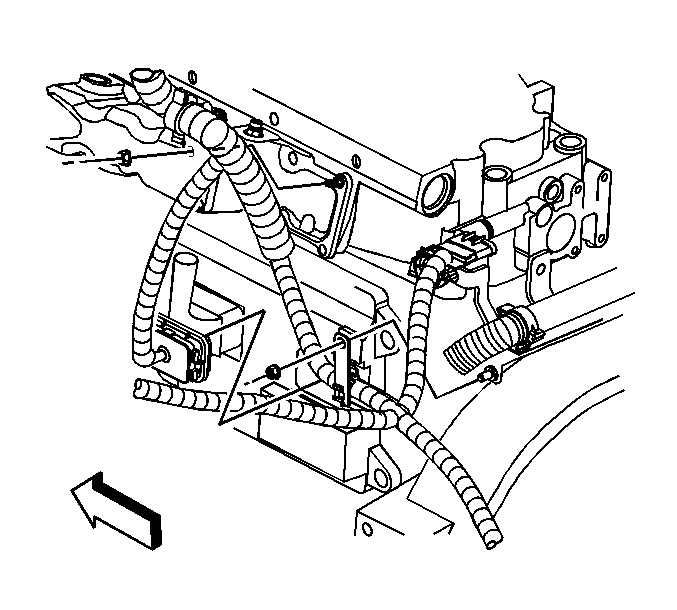
- Remove the engine electrical harness from the retaining bracket at the rear of the engine.
- Remove the engine wire harness retainers and position the engine wire harness away from the engine.
- Remove all ground straps from the engine to the frame.
- Remove the inlet heater hose from the engine block. Refer to
Heater Inlet Hose Replacement.
- Remove the outlet heater hose from the engine block. Refer to
Heater Outlet Hose Replacement.
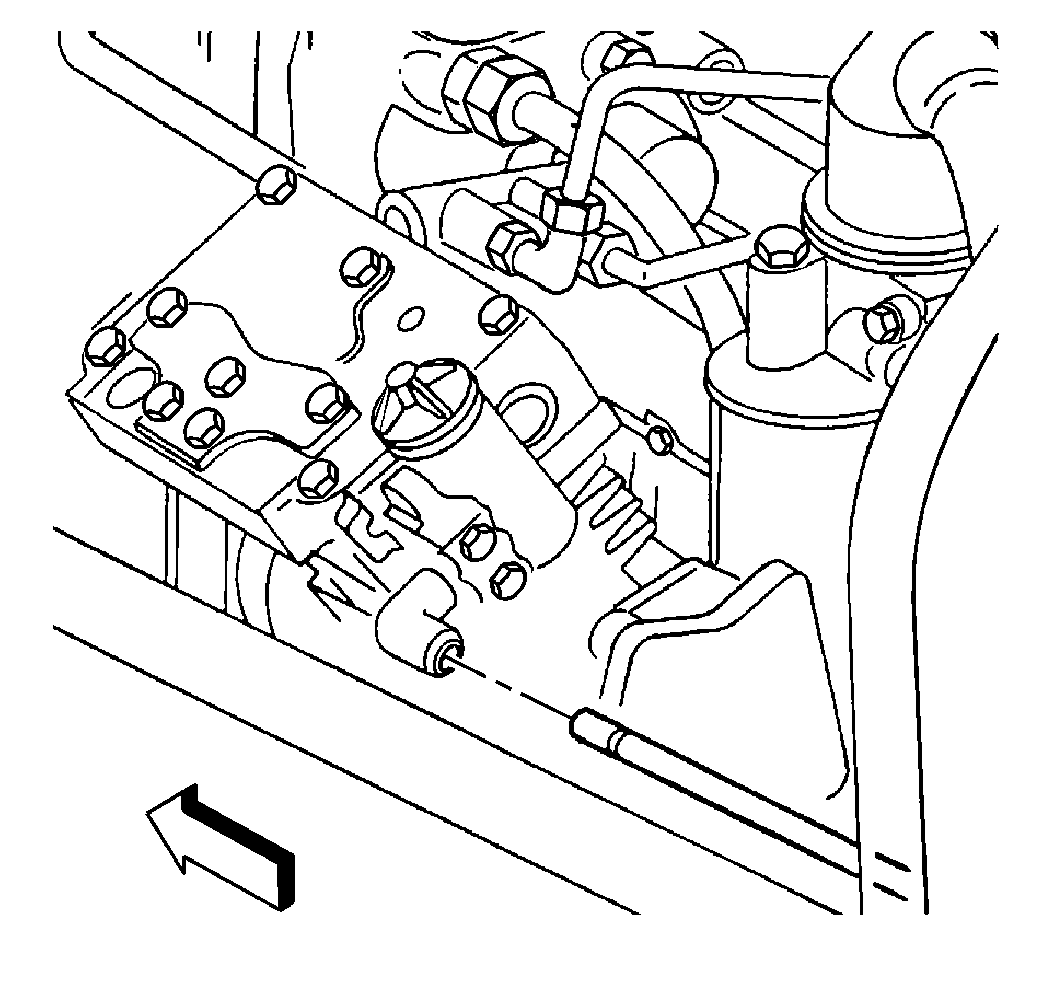
- If equipped, remove the governor air line from the air compressor.
- If equipped, remove the air inlet line from the air compressor.
- If equipped, disconnect the air compressor discharge line at the rear of the engine.
- Drain the engine of oil. Refer to Caterpillar® 3126 Unit Repair Manual.

- Remove the exhaust pipe from the turbocharger and secure out of the way.
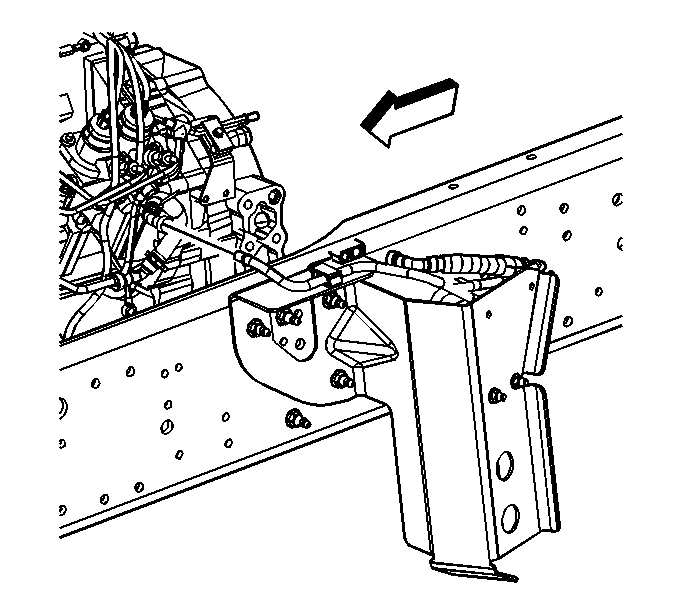
Important: Cap the fuel line and the fittings to prevent the fuel from leaking and dirt from entering the fuel system.
- Remove the fuel feed lines and return from the fuel supply pump and rear of engine.
- Remove the propeller shaft. Refer to
One-Piece Rear Propeller Shaft Replacement , or to
Two-Piece Rear Propeller Shaft Replacement , or to
Three-Piece Rear Propeller Shaft Replacement.

- If equipped, remove the parking brake cable from the brake drum.

- Remove the exhaust pipe from the turbocharger. Refer to
Exhaust Manifold Pipe Replacement.
- Remove the exhaust pipe from the muffler. Refer to
Muffler Replacement.
- If equipped, remove the transmission support. Refer to
Transmission Support Replacement for the medium duty transmission.
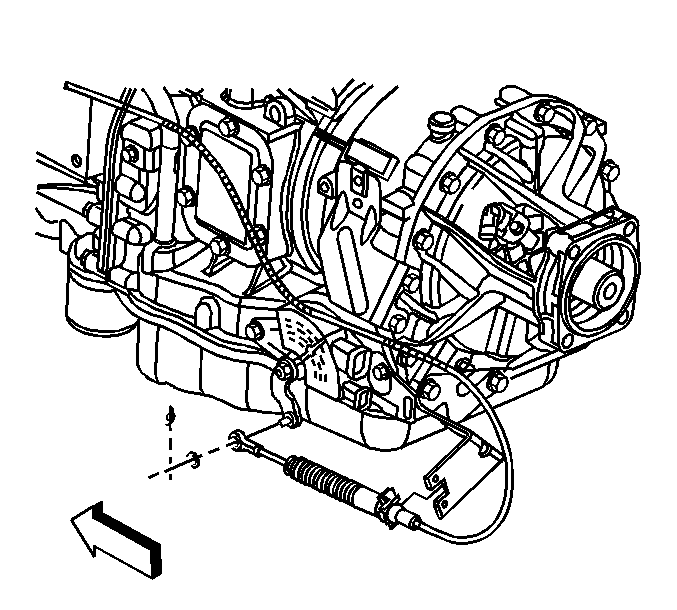
- If equipped with an automatic transmission, perform steps 34-46.
- Drain the transmission oil. Refer to
Automatic Transmission Fluid and Filter Replacement.
- Remove the transmission oil level indicator and the oil level indicator tube. Refer to
Transmission Fluid Filler Tube and Seal Replacement.
- If equipped, remove the transmission heat shield fasteners and the heat shield from the transmission.
- Remove the starter. Refer to
Starter Motor Replacement.
- If equipped, remove the oil cooler lines from the transmission. Refer to
Transmission Fluid Auxiliary Cooler Inlet and Outlet Hose Replacement.
- If equipped, remove the shift cable from the transmission.
- Remove the wiring harness and disconnect the transmission electrical connectors
- If equipped, remove the flywheel housing access cover.
- Mark the flywheel and torque converter or the flex plate relationship for reassembly purposes.
- Turn the flex plate using a pry bar or the engine harmonic balancer, in order to align the torque converter or flex plate bolts with the access hole or starter hole.
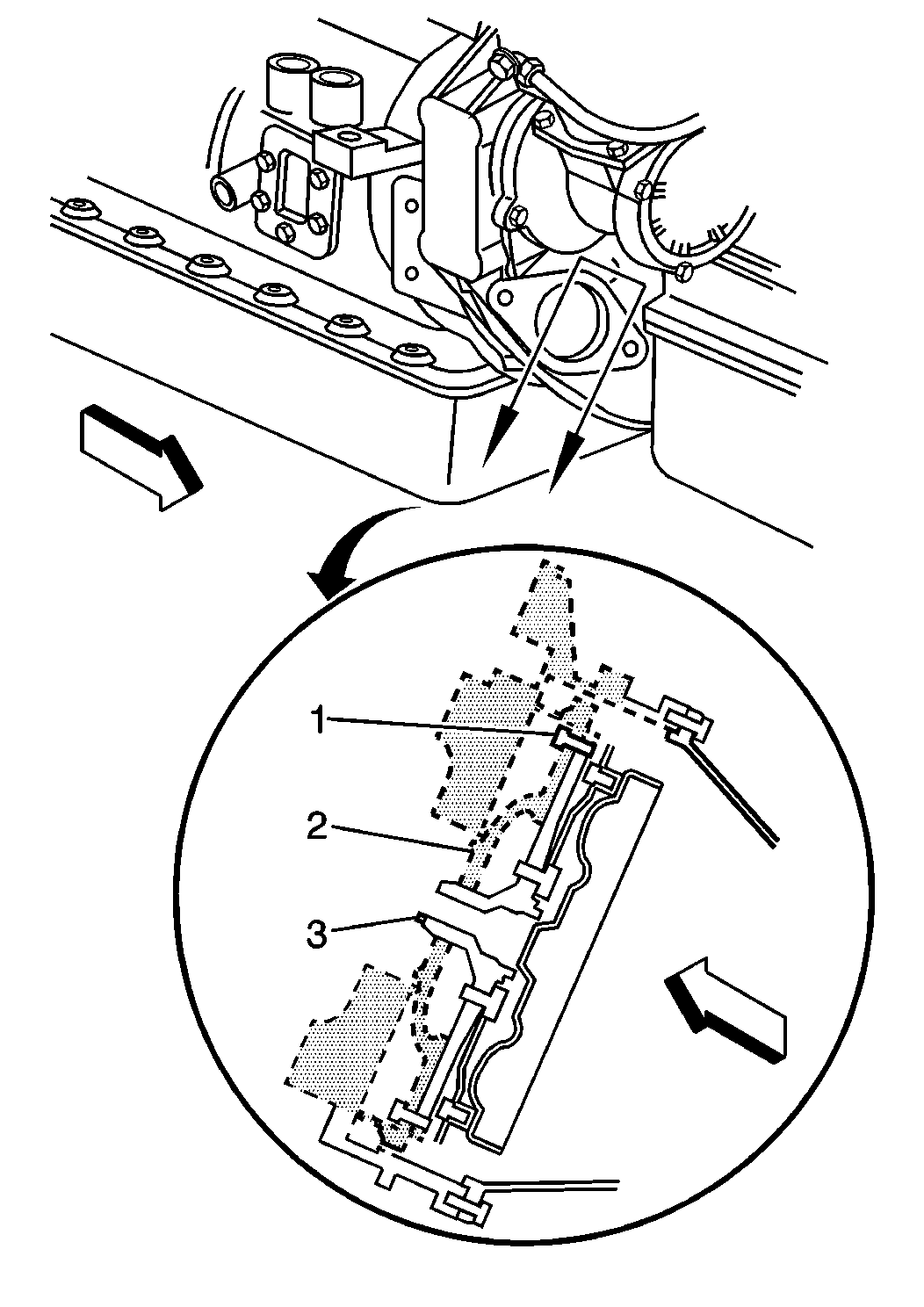
- Remove the flex plate (3) to flywheel (2) bolts (1), or if equipped, the torque converter
bolts.
- If equipped, remove the fuel line from the fuel line bracket.
- If equipped, remove the fuel line retainer bracket from the transmission.
- If equipped with a manual transmission, perform steps 48-53.
- Remove all electrical connectors from the transmission.
- Remove all electrical harness retainers from the transmission.
- If required, raise the vehicle. Refer to
Lifting and Jacking the Vehicle.
- Remove the clutch cable and bracket from the transmission. Refer to
Clutch Cable Return Spring and/or Bracket Replacement.
- Remove the control lever and boot. Refer to
Control Lever and/or Boot Replacement for the medium duty transmission.
- If equipped, remove the fuel line retainers from the transmission.
- Using a transmission jack, support the rear of the transmission.
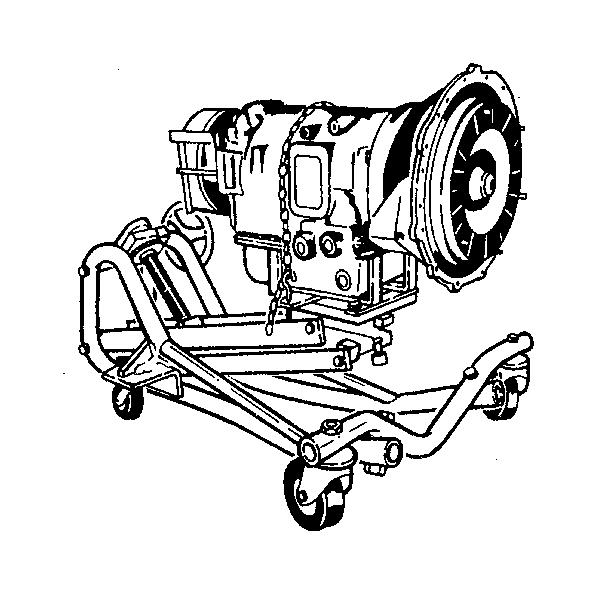
Important: Support the transmission with a transmission jack that can support a load of at least 349 kg (750 lb).
- Install a safety chain to secure the transmission to the transmission jack.
- Using a suitable overhead hoist, attach a load leveling devise to the front engine lifting eye.
- Remove the rear engine mounting bolts. Refer to
Engine Rear Mount Bracket Replacement.
- Remove the front engine mounting bolts. Refer to
Engine Front Mount Bracket Replacement.
- Ensure the wiring harness does not become hung up on the engine.
- Pull the engine forward far enough to connect to the rear engine lift eye.
- Attach the load leveling device to the rear engine lift eye.
- Remove the transmission jack.
- Remove the engine and transmission from the vehicle.
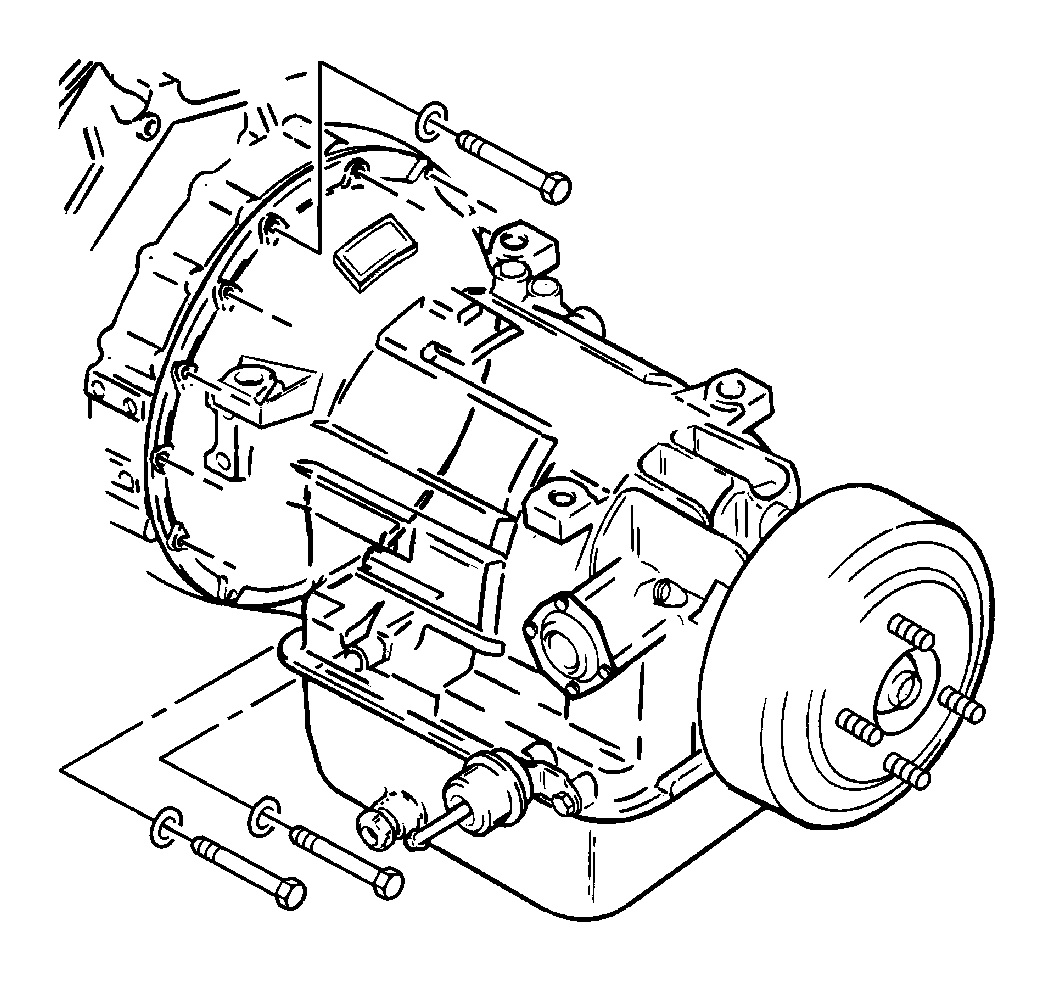
- If equipped with an automatic transmission, perform the following:
| 64.1. | Attach the transmission jack. |
| 64.2. | Remove the bolts securing the transmission to the engine. |
| 64.3. | Remove the transmission from the engine by sliding the transmission rearward. |
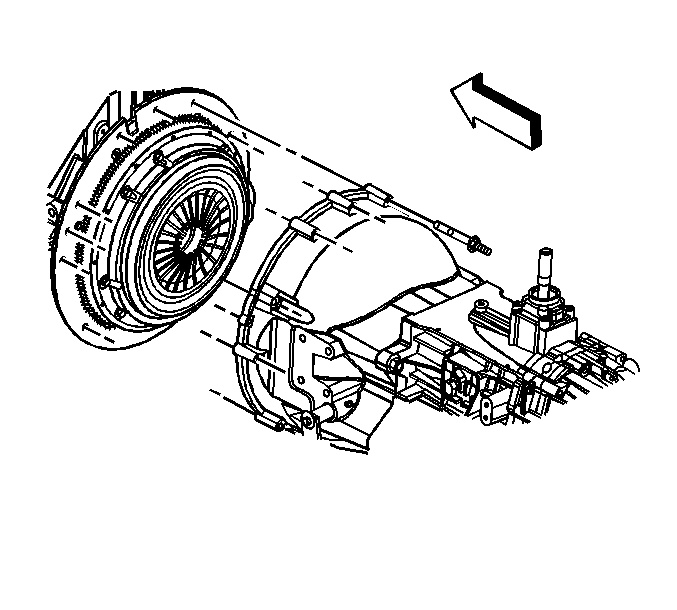
- If equipped with a manual transmission, perform the following:
| 65.1. | Attach the transmission jack. |
| 65.2. | Remove the transmission apron housing bolts. |
| | Notice: When removing the transmission, do not allow the weight of the transmission
to hang on the clutch disc hub. The clutch disc will become distorted and
seriously affect the operation of the clutch.
|
| 65.3. | Move the transmission straight back from the engine, keep the mainshaft in alignment with the clutch disc hub. |
| 65.4. | When the transmission is free from the engine, lower and remove the transmission. |
Installation Procedure
- If equipped with a manual transmission, perform steps 2-9.
- Shift the transmission into high gear
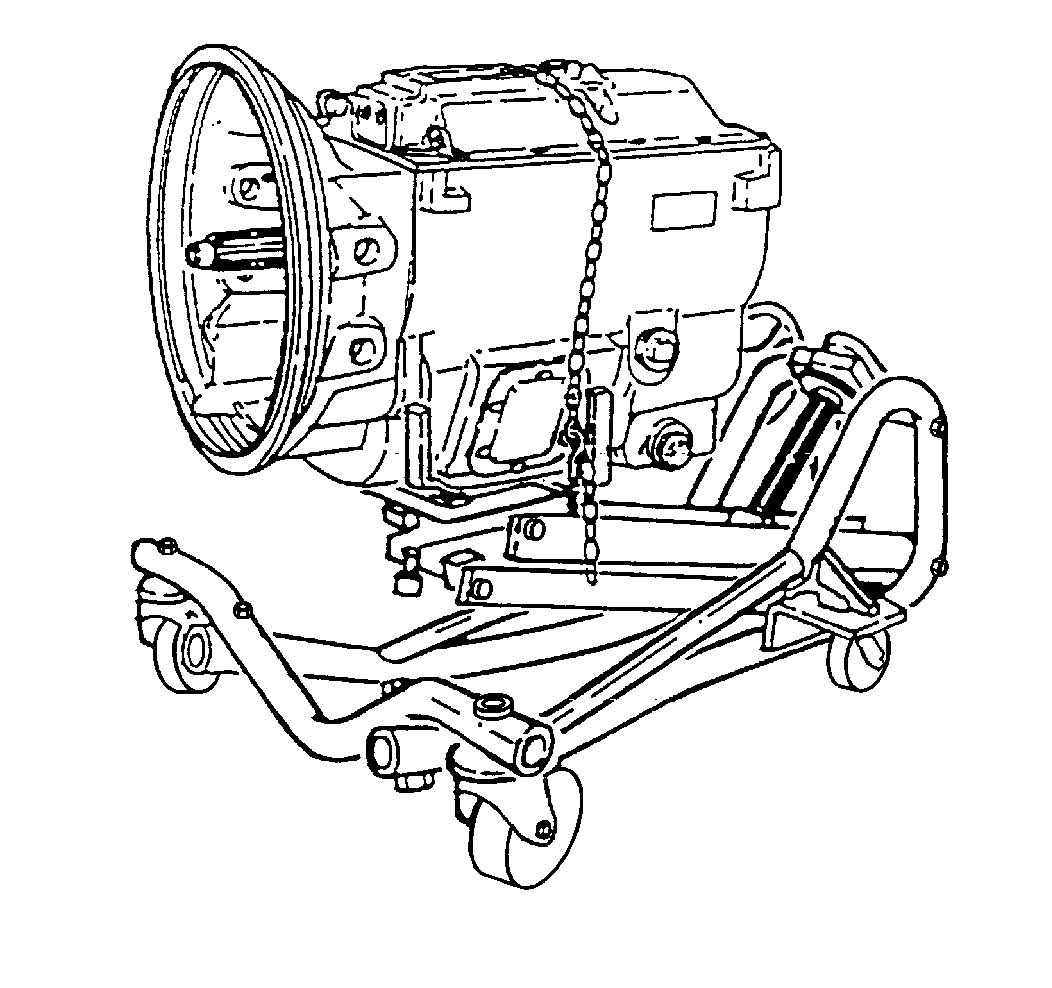
- With the transmission mounted to a suitable dolly, move the transmission into position under the vehicle.
- Rotate the output shaft to align the main drive gear shaft with the clutch disc hub.

- Move the transmission forward, guiding the main drive gear shaft into the clutch disc hub.
- Install the transmission.
| • | Avoid springing the clutch when installing the transmission. |
| • | Do not allow the transmission to drop or hang unsupported in the splined hub of the clutch disc. |
Notice: Refer to Fastener Notice in the Preface section.
- Install the transmission apron housing bolts.
Tighten
Tighten the transmission apron housing bolts to 50 N·m (37 lb ft).
- If equipped, install the exhaust manifold front pipe bracket and transmission bolts.
- Remove the transmission jack.

- If equipped with an automatic transmission, perform steps 11-15.
- Reattach the transmission jack.
- Raise the transmission to the engine.
- Install the transmission to the engine while aligning the torque converter with the engine flex plate.
- Install the transmission to engine bolts.
Tighten
Tighten the transmission to engine bolts to 50 N·m (37 lb ft).
- Remove the transmission jack.
- Position the engine and transmission into the vehicle as far as possible.

- Install the transmission jack.
Important: Support the transmission with a transmission jack that can support a load of at least 349 kg (750 lb).
- Install a safety chain to secure the transmission to the transmission jack.
- Remove the leveling device from the rear engine lift eye only.
- Install the engine and transmission to the engine mounts.
- Install the front engine mount bolts. Refer to
Engine Front Mount Bracket Replacement.
- Install the rear transmission mount bolts. Refer to
Engine Rear Mount Bracket Replacement.
- If equipped, install the transmission rear support. Refer to
Transmission Support Replacement for the medium duty transmission.
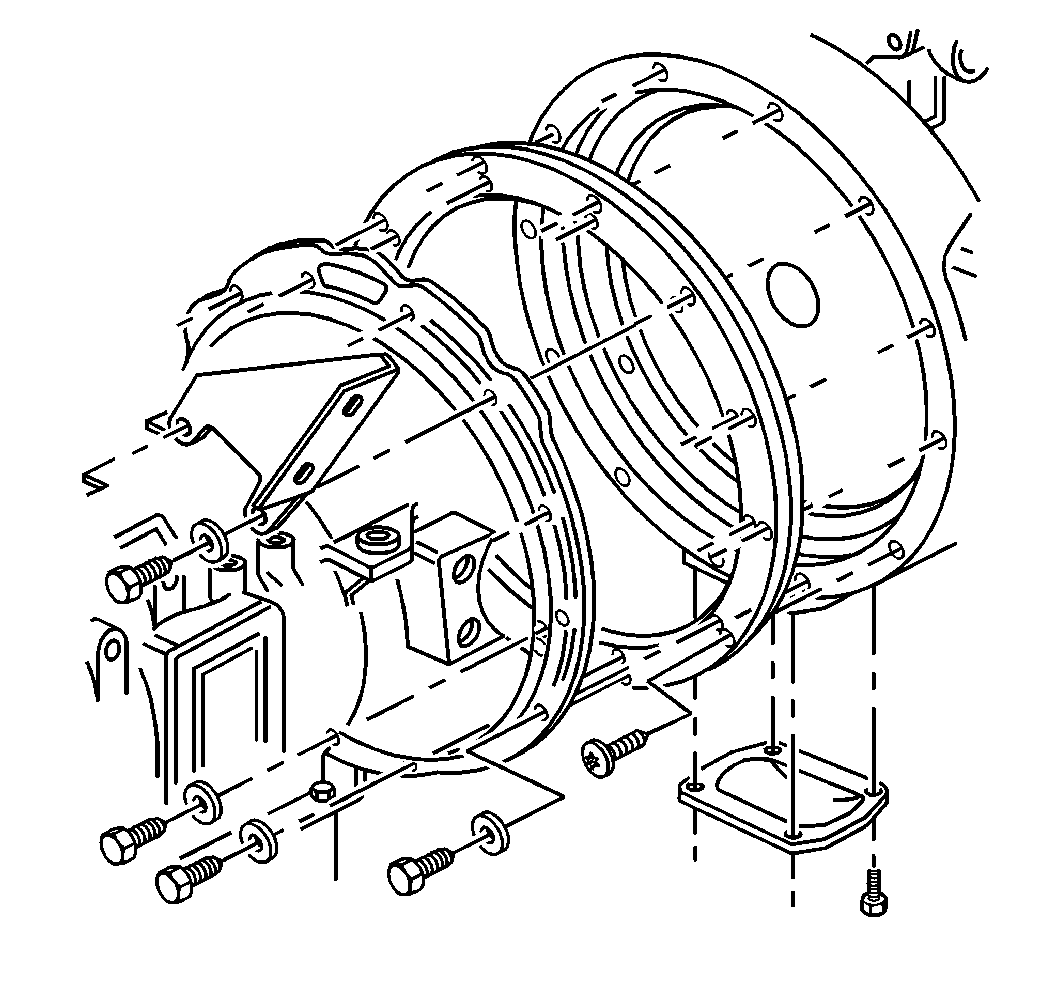
- If equipped with an automatic transmission, perform steps 25-28.
- Turn the engine flex plate using a pry bar or engine at the harmonic balancer in order to install the torque converter to the flywheel bolts.
- When reusing the torque converter bolts, clean the bolts and apply LOCTITE™.
- Install the torque converter bolts.
Tighten
Tighten the torque converter to flywheel bolts to 60 N·m (44 lb ft).
- If equipped, install the flywheel housing access cover.
- Remove the overhead hoist.
- Remove the transmission jack.
- Install the starter assembly. Refer to
Starter Motor Replacement.

- Install the muffler to the exhaust pipe. Refer to
Muffler Replacement.
- Install the exhaust from the muffler to the turbocharger. Refer to
Exhaust Manifold Pipe Replacement.

- If equipped, install the parking brake cable to the park brake drum.
- If equipped, install the oil cooler lines to the transmission. Refer to
Transmission Fluid Auxiliary Cooler Inlet and Outlet Hose Replacement.
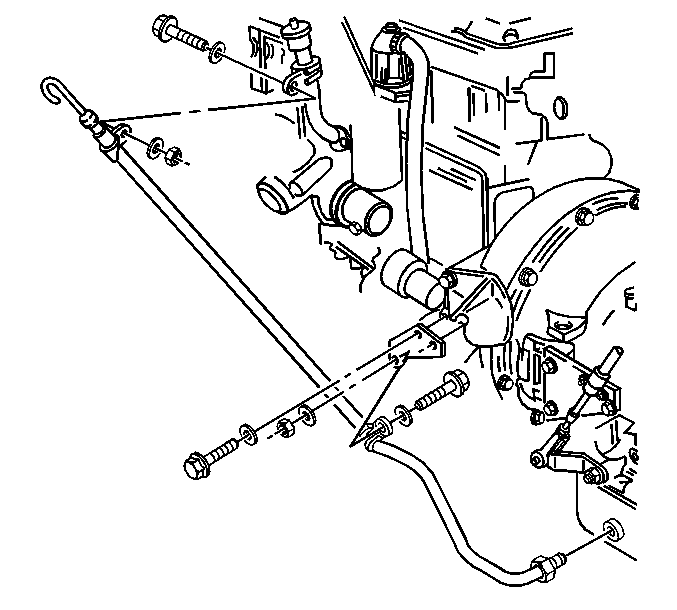
- Install the oil level indicator tube. Refer to
Transmission Fluid Filler Tube and Seal Replacement.
- Connect the transmission electrical connectors and install the wiring harness to the transmission.
- If equipped, install the fuel line brackets.
- If equipped, install the fuel lines to the fuel line brackets.
- If equipped, install the transmission heat shield with 2 bolts.
Tighten
Tighten the transmission heat shield bolts to 15 N·m (11 lb ft).
- Install the propeller shaft to the transmission. Refer to
One-Piece Rear Propeller Shaft Replacement or to
Two-Piece Rear Propeller Shaft Replacement or to
Three-Piece Rear Propeller Shaft Replacement.

- If equipped, install the shift cable to the transmission.
- Lower the vehicle, if required.
- Install the front engine crossmember. Refer to
Engine Front Crossmember Replacement.
- Install the radiator crossmember. Refer to
Radiator Crossmember Replacement.
- Install the air compressor and the lines.
- Install the fuel lines and connectors to the fuel supply pump.
- Install the ground straps to the frame and the engine.

- Install the electrical connectors to the following components:
| • | The engine wiring harness |
| • | The oil pressure switch |
| • | The engine coolant switch |
| • | The fuel/water separator |
- Install the engine wiring harness to the retainers.
Tighten
Tighten the bolts and the nut to 22 N·m (16 lb ft).
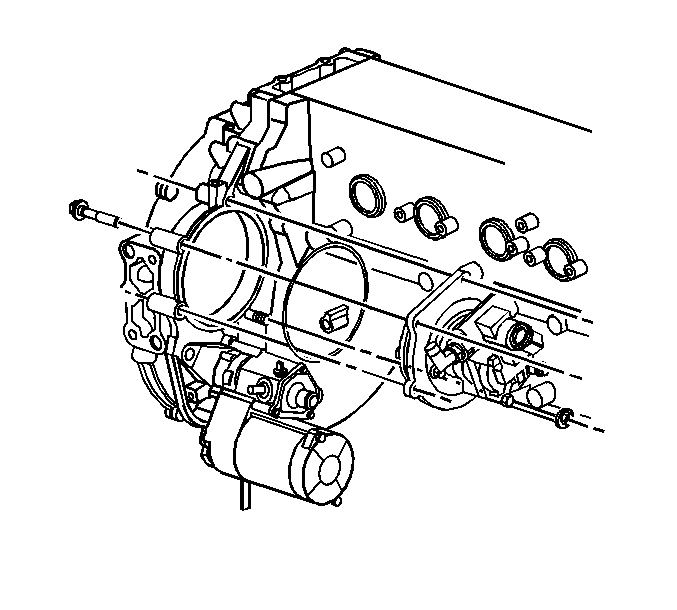
- Install the power steering pump. Refer to
Power Steering Pump Replacement.
- Install the fuel lines and connectors to the fuel supply pump and at the back of the engine.
- Install the heater hoses to the engine.
- Install the air inlet pipes.
- Prime the lubrication system if the engine has been rebuilt. Refer to Caterpillar® 3126 Unit Repair Manual.
- Connect the battery negative cables to the batteries. Refer to
Battery Negative Cable Replacement.
- Fill the air brake reservoir with air. Refer to
Air Brake Reservoir Filling.
- Fill the crankcase with the proper grade and quantity of engine oil. Refer to Caterpillar® 3126 Unit Repair Manual.
- Fill the power steering reservoir to the proper level.
- Prime the oil galleries if the engine has been rebuilt. Refer to Caterpillar® 3126 Unit Repair Manual.
- Prime the engine oil system if the engine has been rebuilt. Refer to Caterpillar® 3126 Unit Repair Manual.
- Prime the fuel system before starting the vehicle. Refer to Caterpillar® 3126 Unit Repair Manual.
- Install the engine cover. Refer to
Engine Cover Replacement.
- Install cooling layer. Refer to
Cooling Layer Removal.
- Install air cleaner. Refer to
Air Cleaner Replacement.

























